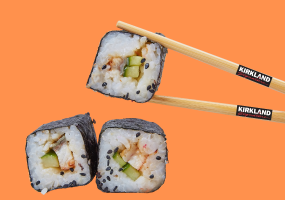
Across the industrial spectrum, the number of organizations buying into technology related to the Internet of Things (IoT) continues to proliferate at an epic pace. Many companies have already realized the transformational advantages of the IoT.
Whether that benefit is improving consumer experiences, reducing operational costs, or enhancing product safety, the IoT has continued to disrupt an array of industries and public sectors for good, from manufacturing and cities to healthcare and retail. The food industry is no exception; a variety of companies along the food supply chain have also jumped on the Internet of Things bandwagon.
In this article, we lay out three notable ways in which the IoT, alongside other emerging technologies such as Artificial Intelligence (AI) and Big Data, enhances safety in the food industry.
(1) IoT Broaches More Opportunities for Automation
It's no secret that the food supply chain becomes more connected every day. Around the globe, food companies are using the IoT, AI, mobile networks, and a raft of other technologies to improve the efficiency of the supply chain, and to enhance food quality and safety. Even so, our modern food supply systems are far from perfect because some processes are still subject to manual handling.
Even a seemingly small human error can lead to costly food recalls or, worse, a full-blown foodborne disease outbreak. Don't forget that more than 48M Americans (roughly 600M worldwide) fall prey to foodborne illnesses every year, resulting in 3,000+ fatalities and over 128,000 ER visits. However you look at it, there is much room for improvement; that's where IoT can jump in to fill that gap through automation.
Thankfully, connected "things" are gathering data from the farm to your plate, and sharing them through aggregated networks to help the entire industry better manage food safety and, more importantly, eliminate the chances of human error. With the IoT and real-time data streaming in from left, right and center, automation can not only free up personnel to focus on other areas of the supply chain but also streamline repetitive and mechanical processes.
A streamlined and efficient food supply chain means a more upbeat market with products more quickly reaching customers. Improvement in the efficiency of food supply chains can be quite beneficial in terms of heightened handling times.
These benefits can reverberate throughout the entire food industry. For instance, faster delivery of fresh fruits and vegetables to grocery stores and consumers translates to longer shelf-life. By staying fresh longer in the consumer's fridge or on the retailer's cold shelves, these products will not likely end up spoiled or thrown away. Of course, less food spoilage and wastage mean more money saved and greater profit margins for farmers, food processors, and retailers & restaurants at the end of the supply chain.
(2) Enhanced Environmental Monitoring
The food supply chain entails a vast network of food processors, transporters, restaurants, kitchens, and warehouses, to mention only a few links. Throughout the journey of the food from farm to fork, there are many factors to monitor. More specifically, they must monitor the cold temperature and other environmental conditions at all points of the supply chain to prevent microbial growth and ensure the safety and quality of the products.
This cold supply chain is a delicate system that calls for consistency and constant vigilance. In unfortunate situations, cooling systems and other components can malfunction or break down. Such an occurrence, without an alert or anyone knowing, can turn into a safety hazard nightmare. IoT-enabled, cloud-based monitoring systems can gather environmental data at every point of the supply chain and be analyzed on the fly by AI platforms.
These cloud-based monitoring systems automatically report issues such as temperature deviations so they can be resolved before they lead to more significant problems down the line. For example, monitoring raw meat temperatures along a supply chain can ensure its safety and quality. This accuracy can't be achieved without a consistent, real-time stream of environmental monitoring data, which is where cloud-enabled data loggers play a crucial role.
Cloud-based monitoring systems available from companies such as Dickson can centrally track numerous data loggers across multiple locations. This allows for prompt yet indirect remote access to the products throughout a supply chain. So, although you are working with automated monitoring systems, you can take charge when necessary to flag contaminated products, mark them unsafe, and so forth. Clearly, this is a game-changer when it comes to preventing foodborne illnesses.
(3) Improves Transparency and Traceability
Until recently, major players in the food and beverage industry employed Internet of Things technology in the usage of RFID tags and barcodes to track product shipments from points of origin to their destinations. As such, the IoT has enabled food producers, transporters, and retailers to make sure product orders reach consumers in an efficient and safe manner.
More recently, the emergence of more sophisticated and agile IoT solutions has allowed food companies to keep an even closer eye on the cold chain which encompasses all segments of food production, preparation, handling, storage, distribution, warehousing, and transport. By monitoring the whole supply chain, they can regulate and report on a host of environmental conditions to meet regulatory requirements and ensure food safety and quality.
Using the IoT to monitor the food supply chain makes it easy to manage and control how employees and personnel handle products. Ensuring that 3rd parties like logistic companies are adhering to set rules and regulations, on the other hand, can be a totally different story. That is especially true if there are no real-time sensors or IoT devices put in place.
Food companies can use the IoT to track their goods along the whole supply chain. This helps ensure transparency down the line and enables companies to be closely aware of their food safety and quality from the points of origin to the destination.
Remember, cloud-enabled monitoring devices (those fitted with sensors) gather and share a massive swath of critical information. This sensor data can be leveraged to maintain stringent controls, amp up supply chain efficiency, and much more.
Conclusion
IoT adoption in the food industry is still in its early stages. However, the benefits are already being felt in terms of better traceability, enhanced monitoring, and increased opportunities for automation. Together, these benefits can help ensure food quality and safety, reduce foodborne illness risk, enhance supply chain efficiency, and reduce waste. Food processors lose control of their products once they leave their warehouses; IoT-enabled devices can be their eyes!
* This is a contributed article and this content does not necessarily represent the views of foodworldnews.com









